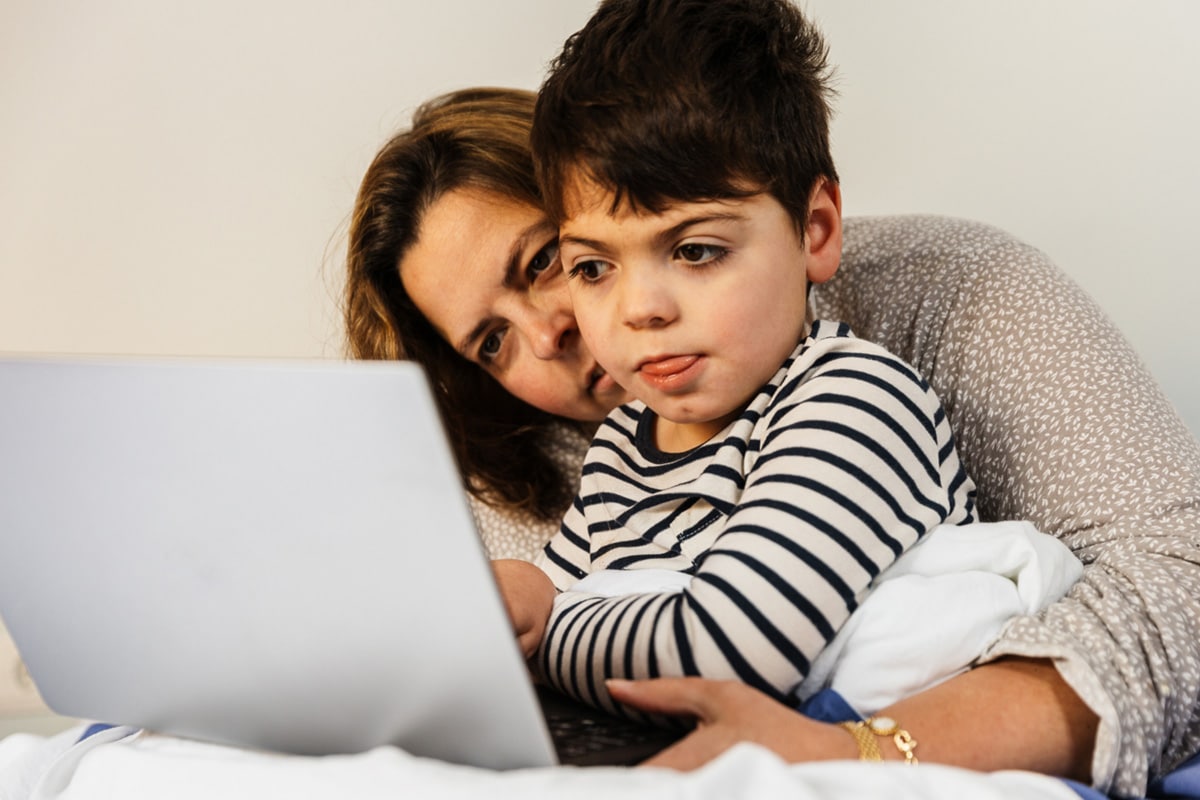
Making special education work for your child during COVID-19
Even in normal times, parents wrestle with decisions about how best to support their children’s development. Now, however, parents are faced with nearly-unprecedented choices, and problems with no clear solutions: What if in-person schooling is better for emotional health, but remote schooling is better for physical health? How can children foster social skills without typical social interactions? How can parents select among learning environments when all the options have clear downsides?
These concerns and choices are even more difficult for parents of children with disabilities, who are among the most vulnerable students and who are at increased risk of regression during school disruptions.
Special education: One size does not fit all
Of course, students who receive special education are not a uniform group. They range in age from 3 to 22, attending preschool through post-secondary placements. They include students with a wide variety of mild to severe cognitive, physical, social, emotional, and behavioral disabilities.
But students with disabilities share a need for special services, accommodations, or both, in order to fully access the school curriculum, and to make meaningful progress appropriate to their ability. At a time when schools are scrambling to deliver regular education in a novel and frightening new context, parents and educators must also work together to select and design appropriate programs for students with special needs.
Remote learning
Remote learning has two obvious benefits. First, it is the safest choice from a physical health perspective; it may indeed be the only choice for students who are medically fragile. Second, remote learning is less likely to be disrupted or changed over the course of the school year. Students who struggle with transitions or anxiety may benefit from the relatively predictable course of remote learning.
But remote learning also carries risks, some of which are particularly acute for students with disabilities. When children are at home, educators may not be able to deliver some services or accommodations. It may be more difficult, or even impossible, to work toward some goals, especially those that require proximity to or interaction with others, such as independently toileting, or purchasing lunch in the school cafeteria without adult support.
Remote learning also requires flexibility in parents’ schedules, and intensive parental participation. Even with parental involvement, students vary in how effectively they can engage with remote learning. And students who struggle with attention, intellectual functioning, language, self-regulation, or a combination of these challenges may have great difficulty learning efficiently from a remote platform. The lack of peer models may lead some children to regress behaviorally or academically.
In-person learning
In-person or hybrid (a combination of remote and in-person learning) models offer most of the benefits that remote options lack. These include a social environment with peers, and access to services and accommodations in as normal an environment as possible. Students who require intensive support, hands-on services, or who are working on skills specific to the school or vocational environment may require in-person learning opportunities in order to fully access the curriculum.
However, in-person models carry one major and obvious risk: the potential of increased exposure to COVID-19. All parents must be wary of this dangerous disease, and parents of medically complex children may deem such a risk unacceptable, despite potential academic or social benefits.
In-person models are also likely to evolve as the pandemic progresses. As a result, students will require greater flexibility in order to be successful at a physical school.
What should parents do?
Parents and educators will need to approach this challenge with creativity, flexibility, and collaboration. Parents should request to meet with their child’s educational team as soon as possible, and should plan to meet regularly thereafter to monitor their child’s progress, and to update the educational program as needed. When parents meet with their team, they should consider each goal and service with an open mind, discussing multiple options for how a goal could be met, and how a service or accommodation could be delivered.
Some adaptations are easy: for example, large print, screen-reading software, and speech-to-text are all immediately available in a remote context. Other adaptations pose challenges, but not necessarily insurmountable ones. A behavior analyst could offer coaching through a video call, for example. Or a teacher certified in intensive special education could deliver discrete trials instruction remotely by positioning two tablets in the child’s home, one for the child to use, and one as a screen to watch the child’s responses. An aide or behavioral support could join a child’s virtual classroom, and chat with or break out with the child as needed to offer support.
Now is the time for innovation, and many schools and families are discovering great new ways to deliver special education instruction safely and effectively.
Put schooling in perspective
While it can seem like there are no great options for school, parents should try to take comfort in accepting that this year, “good enough” is truly enough.
We should also strive to prioritize the things that children require even more than schooling: physical and emotional safety, a responsive adult, and unconditional love and acceptance. Children who feel safe and loved will emerge from this pandemic resilient, and ready to overcome other challenges in their future — and they may even have learned a thing or two along the way.
Resources
Autism Speaks COVID Resources
Child Trends (includes multiple excellent articles about supporting children through COVID-19)
Harvard’s Center for the Developing Child Guide to COVID-19 and Early Child Development
Helping Traumatized Children Learn, a collaborative work of MA Advocates for Children and Harvard Law School
Learning Policy Institute Resources and Examples
US Department of Education resources for schools, students, and families